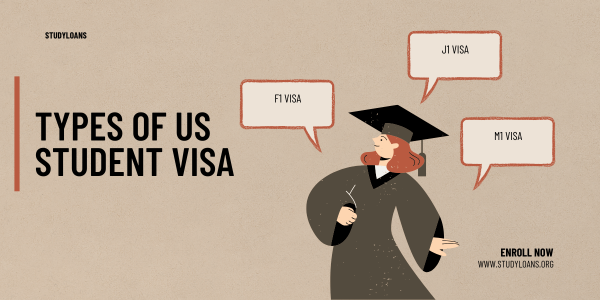There are three types of student visa for US are F1, J1, and M1.
F1 Student Visa: F1 student visa, allows students to stay for a long time to pursue undergraduate or postgraduate courses.F1 student visa requires 18 hours of classes per week.
J1 Student Visa: J1 Student Visa is for students who participate in the student exchange program..
Difference Between F1 Visa & J1 Visa
F1 Visa
- F1 Visa is for academic students pursuing a full-time course of study in the U.S.
- Student must be enrolled in a full-time academic program at a U.S. institution.
- F1 Visa is for the duration of the academic program, plus a 60-day grace period.
- In F1 Visa, on-campus employment is allowed up to 20 hours/week during school and full-time during breaks. And off-campus employment is allowed with authorization during breaks.
- Spouses and children can accompany on an F2 visa, but cannot work.
- Student should prove sufficient funds to cover tuition, living expenses, etc.
- After completion of post graduation studies, 12-month Optional Practical Training (OPT) is allowed (may be extended for STEM graduates).
- In F1 Visa not required to return to his/her home country after the program ends.
- F1 Visa Application is processing is through U.S. embassy/consulate.
- F1 visa holders may apply for a change of status to another non-immigrant visa or immigrant status
J1 visa
- J1 Visa is for participants like students, scholars, interns etc in exchange programs.
- This Visa must be accepted into a U.S. government-approved exchange program.
- Duration varies with program type. It is up to 5 years for students and can be longer for other categories like scholars etc.
- In this visa employment is allowed only if directly related to the exchange program like internships, research etc
- In J1 Visa family members like Spouses and children can accompany them on a J2 visa; J2 visa holders may apply for work authorization in some cases.
- In J1 Visa student must demonstrate financial support from the sponsor organization that can also include stipend or scholarships.
- Student must return to the home country for at least 2 years under the 2-year home residency requirement.
- J1 Visa, application through the U.S. embassy/consulate after being accepted into a designated exchange program.
- J1 holders may apply for a change of status or extend their stay in some cases
Process of Getting an F1 Visa
Applying for the F1 student visa then below steps needs to follow.
* The US student visa’s first requirement into enroll and receive an offer letter from legitimate University i.e. in the Student and Exchange Visitor Program (SEVP) list.
* Once University accept your enrollment, then you are listed in the Sevis System and you will receive the (SEVP)Certificate of Eligibility for Nonimmigrant (F-1) Student Status-For Academic and Language Students), also called the I-20 form.
*You need to pay the SEVIS I-901 fee which is $350 and make sure that all the information entered on the form matches with your other related documents.
*Once you receive the SEVIS I-901 form i.e a receipt, and then you are eligible to fill up the DS-160 form. The DS-160 is an online F1 visa application form.
*After completing the US Visa application, you have to book your visa appointment. Prepare for visa interview and should reach the appointment center on time.
Process of Getting a J1 Student Visa
- Student exchange programs help students receive monetary support from government bodies. Here is the J1 Visa application process:
- Student you must be accepted into an accredited exchange program that is authorized by the U.S. Department of State.
- Once student is accepted, then the sponsor organization will provide you with a DS-2019 Form (Certificate of Eligibility for Exchange Visitor Status).
- After submitting the DS-2019 form, pay the SEVIS fee of $220 online and save the receipt and it will be submitted during the visa interview.
- Complete the DS-160 form which is the online application for the J1 Visa USA. It requires personal, academic, and travel information, as well as details about your exchange program.
- Book the Visa appointment,, you need to attend a visa interview. Student should be well prepared to discuss exchange program, plans after completing your program etc.
Rejection Reasons of the Student Visa J1 and F1
- The rejection rate for student visas is around 36 percent
- Incomplete or invalid documents.
- Unsatisfactory academic performance
- No genuine intention to return to home country
- Lack of funds.
- The wrong visa type


